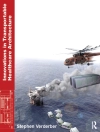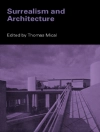Professor Ludger Hovestadts Institut für Computer Aided Architectural Design an der ETH Zürich gilt als eines der weltweit wichtigsten Institute auf der Schnittstelle zwischen Architektur und Informationstechnologie. Diese Verbindung ermöglicht es, Architektur nicht mehr als einen getrennten Bereich der technischen Realität zu sehen, sondern als Bestandteil einer informationstechnologischen Gesellschaft. Der Computer als universales Werkzeug propagiert disziplinübergreifend ein Denken in Informationsstrukturen und -systemen. Dieses „neue Denken’ von Architektur führt zu einem Paradigmenwechsel auf der methodischen Ebene von Entwurf und Planung, von Konstruktion und Ökonomie. Nach einem Jahrzehnt des Experimentierens ist es nun möglich, Informationstechnologie für die Architektur als Grundlage einer neuen, energiesparenden Baupraxis zu begreifen. Die Publikation stellt die entsprechende Arbeit des Lehrstuhls für CAAD anhand zahlreicher Beispiele vor – von der spektakulären Alphütte Monte Rosa von Andrea Deplazes bis zum Wohnbauprojekt von KCAP.
Jadual kandungan
Inhaltsverzeichnis
Text I: Eine neue Tiefenstruktur
1. Any Design
1.1 Die Organisation der Flächen: Schuytgraaf
1.2 Realhistorisches Entwerfen: Heerhugowaard
1.3 Den Daten Gestalt geben: Oqyana
1.4 Die Konsensmaschine: Globusprovisorium
1.5 Die digitale Kette: Hardturm
Text II: Jenseits des Rasters
2. Muster
2.1 Um die Ecke gelaufen: Der Tausendfüssler
2.2 Nachgelaufen: Semper Rustizierer
2.3 Programmieren statt Zeichnen: Processing
Text III: Die Gestaltung des Unvorhersehbaren
3. Gebäude und Volumen
3. 1 Verbotene Schatten: Grünhof Zürich
3.2 Architektur als Regelwerk: Stadtraum Hauptbahnhof Zürich
3.3 Stadt verhandeln: Bishopsgate, London
4. Generische Elemente
4.1 Moderne Antike: Replay Säulenatlas
Text IV: Die Trennung von Struktur und Form
5. Konstruktion
5.1 Die Mutter aller Lösungen: Olympiastadion Peking
5.2 Digitale Kettenreaktion: Futuropolis
5.3 Eine wachsende Konstruktion: Swissbau Pavillon
5.4 Der Tanz der Säulen: Groningen Stadsbalkon
5.5 Stabilität erschütteln: Metrostation Neapel
5.6 Die digitale Hütte: Monte Rosa
Text V: Prozesse und Balancen
6. Strukturen
6.1 Digitale Baukonstruktion: Pavillons
6.2 Mit den Maschinen konstruieren lernen: Paravents
6.3 Bleche blasen: Freie Innendruck-Umformung
6.4 Ein Dach aus Pappe: Monster Structures
Text VI: Daten und Informationen
7. Fassaden
7.1 Von aussen und innen: Südpark Basel
7.2 Die parametrische Fassade: Alu Scout
7.3 Beton wickeln: Credit Suisse, Zürich
Text VII: Als die Dinge laufen lernten
8. Globales Design
8.1 Computer überall 8.2 Fliegen wie die Vögel 8.3 Architektur-Google 8.4 Vollautomaten 8.5 Auf der Baustelle 8.6 Elektrische Intelligenz 8.7 Zu viel Energie 8.8 Die ganze Schweiz online Text VIII: Applied VirtualityMengenai Pengarang
Professor Ludger Hovestadt leitet das Institut für Computer Aided Architectural Design an der ETH Zürich.












